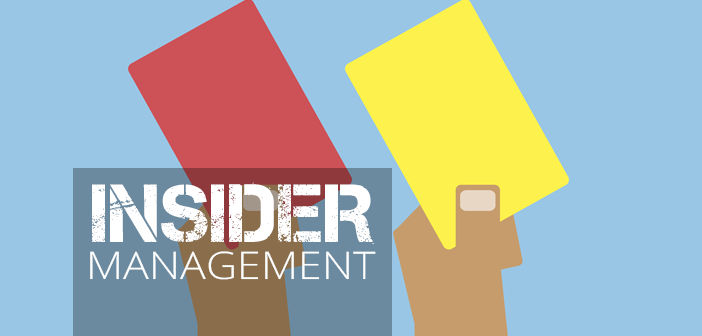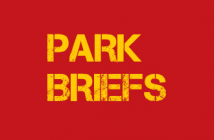Let’s pretend for a minute that you are on the TV show Undercover Boss. If you’re not familiar with it, the show features CEOs who wear a disguise and take a job inside their own company to see how things “really work.”
In this episode, you are a guide whose job is to ensure a safe and positive experience for your guests. Your supervisor—let’s call him Jack—prepares you for your first day, and you can tell already that Jack’s a little rough around the edges. He is impatient with you as you work to figure out the equipment. He rolls his eyes at your clarifying questions. And when you get in front of customers, he says, “Don’t mind this guy, he doesn’t know what he’s doing. He’s new.”
How would you feel if Jack treated you this way? How do you think your customers would feel about Jack, or your park, if they witnessed this kind of behavior?
This type of rude behavior is known as incivility, and it’s rampant in today’s workplaces. Incivility ranges from acts of thoughtlessness to deliberate bullying. Examples of incivility include: disparaging comments, yelling, slamming doors, eye rolling, excluding people, disregarding people’s time, side conversations, checking emails during meetings, teasing (in a way that is hurtful), taking credit for the work of others, etc.[1]
Behaviors like these have a huge cost to your business. Researchers Christine Porath and Christine Pearson spent 10 years studying the cost of bad workplace behavior, and found that among those on the receiving end of incivility:
- 48 percent intentionally decreased their work effort.
- 47 percent intentionally decreased the time spent at work.
- 38 percent intentionally decreased the quality of their work.
- 80 percent lost work time worrying about the incident.
- 63 percent lost work time avoiding the offender.
- 66 percent said that their performance declined.
- 78 percent said that their commitment to the organization declined.
- 12 percent said that they left their job because of the uncivil treatment.
- 25 percent admitted to taking their frustration out on customers.
Additionally, customers who witness employees being rude to each other are far more likely leave a store without making a purchase and far less likely to use the company’s services in the future.
Porath and Pearson report that some years ago global hardware company Cisco put together a detailed estimate of what incivility was costing the company. It factored in its reputation as a consistently great place to work, assumed an extremely low probability of rudeness among its employees, and looked at only three potential costs. Even in this exemplary workplace, it was estimated that incivility cost $12 million a year. That realization led to the creation of Cisco’s global workplace civility program.
What Can You Do?
Constant vigilance is required to ensure that incivility does not become the norm in your organization. Leaders must hold the line and hold others accountable for their actions. Additionally:
Model Good Behavior
Twenty-five percent of managers who admitted to having behaved badly said they were uncivil because their leaders—their own role models—were rude. Make sure you are modeling behaviors you want to see: paying attention, asking insightful questions, closing your laptop at meetings, keeping your promises, etc.
Ask for Feedback
You may not notice your own behaviors that trigger reactions in people. So, keep a journal of what irks you, and try to avoid those things yourself. Also, build strong relationships with your colleagues so they feel more comfortable approaching you with feedback.
Pay Attention to Your Progress
Observe your behavior. The more you pay attention, the more you will realize the impact of your behavior on others. For instance, do you espouse civility during meetings, but disparage a challenging colleague in private one-on-one conversations with your closest work friends?
Hire for Civility
Only 11 percent of companies report considering civility during the hiring process. Group interviews are a good way to get a sense of new hires. We tend to see in people what we want to see, and your colleagues may be more objective in seeing behaviors that may not align well with a culture of civility.
Teach Civility
Twenty-five percent of people who have demonstrated uncivil behavior didn’t even see their behavior as bad. Structured workshops with open dialog, role-playing, and even videotaping can help people see the impact of their own behavior.
Reward Good Behavior
Formal and informal recognition programs—when implemented authentically— go a long way in cementing the right behaviors.
Penalize Bad Behavior
Most managers and companies tend to avoid conflict. Getting into the habit of holding people accountable for their bad behavior—including releasing those who can’t change—is critical.
Conduct Post-departure Interviews
Many organizations are satisfied with the vague answers given during awkward exit interviews. However, waiting six months after someone leaves will give you a better sense of why a person truly left your company.
Taking all of this into consideration, how would you handle an employee like Jack after your true identity as the “undercover boss” is revealed? If you foster a culture of civility, guys like Jack probably aren’t on the payroll to begin with.
[1] In this article, we’re talking about behavior that is legal, but questionable. Some of these behaviors may not be explicitly covered in existing organizational policies or by established professional ethics. By contrast, illegal behavior, such as discrimination, is clearly never acceptable.






